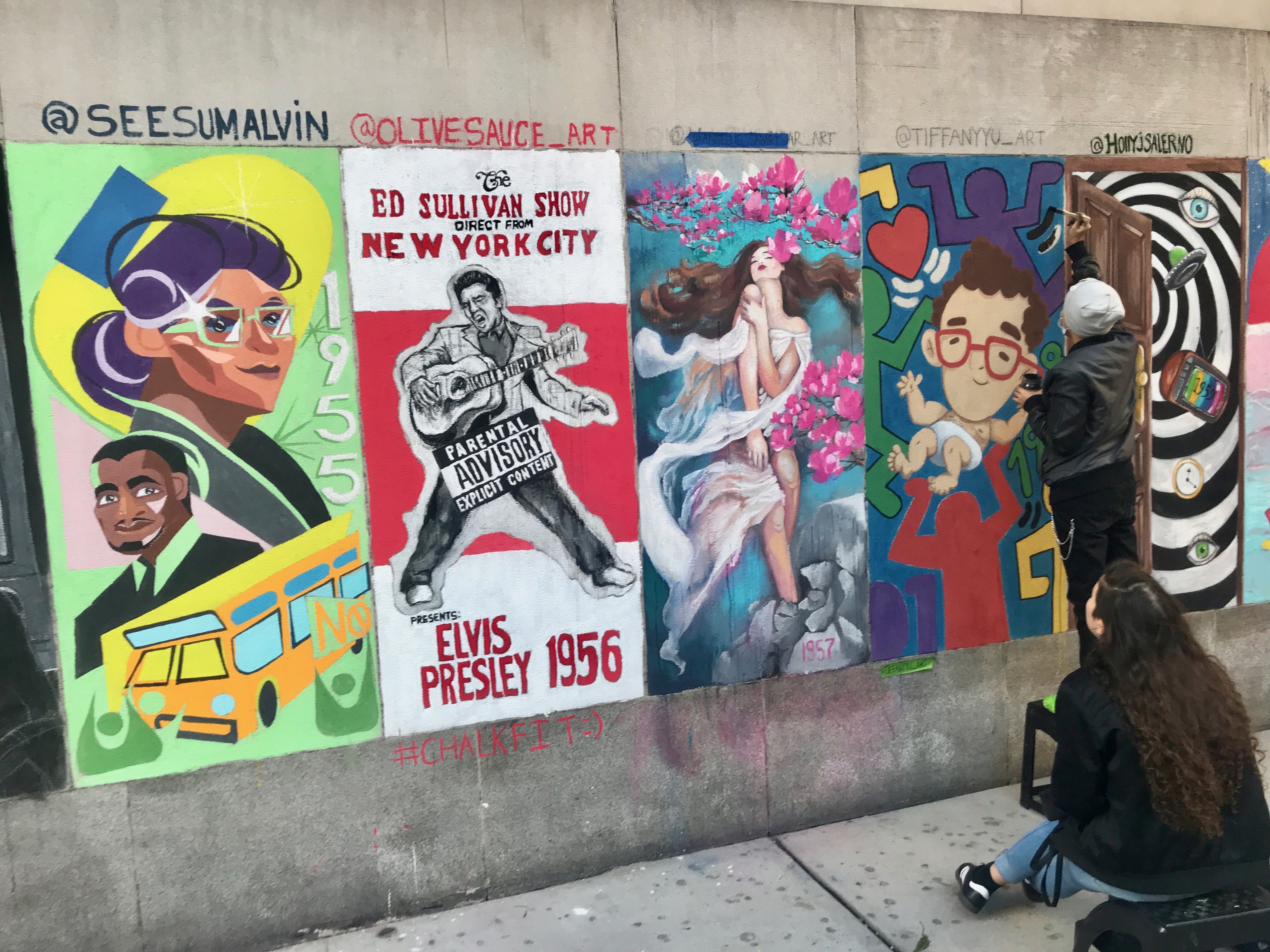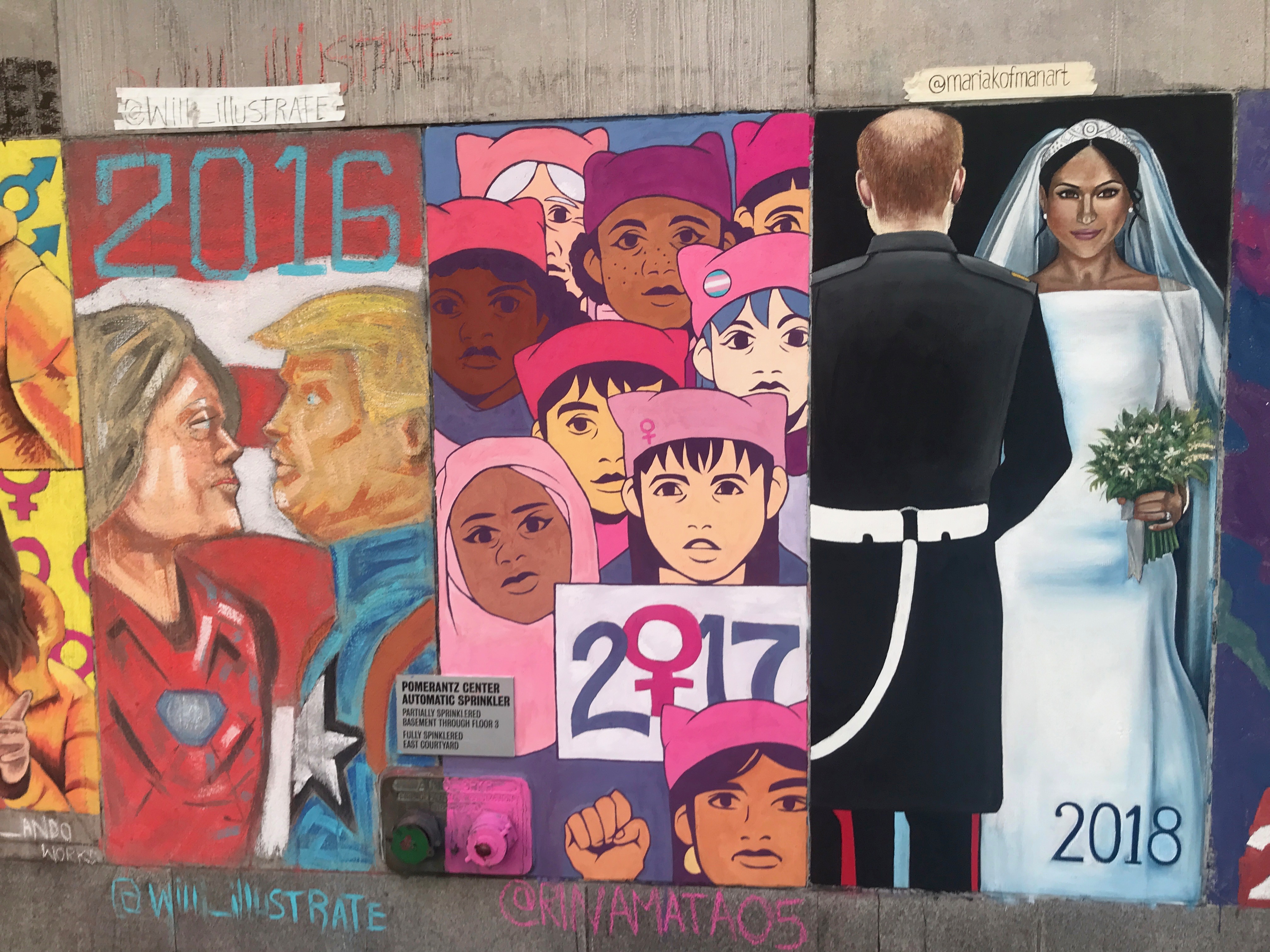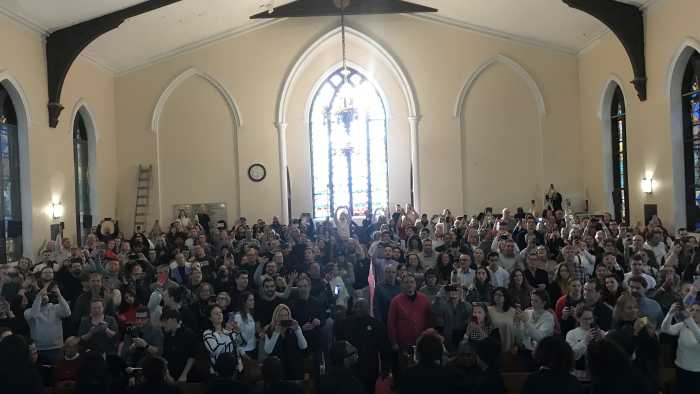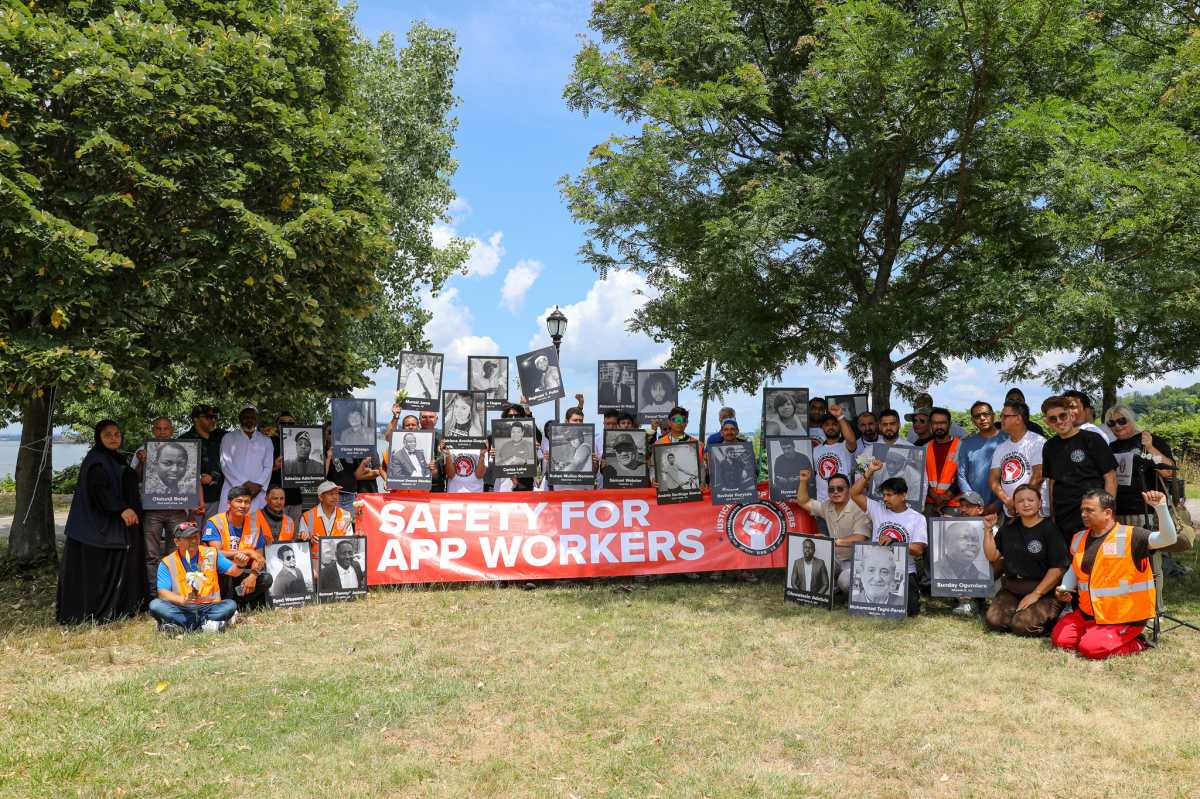
BY GABE HERMAN | Students at the Fashion Institute of Technology have unveiled a sprawling mural that includes 90 panels to celebrate the Chelsea school’s 75th anniversary. The work called “ChalkFIT” covers the outside of school buildings from 26th to 28th streets along Seventh Avenue. Each panel represents a different year, going back to the school’s founding in 1944 and stretching several years into the future. The panels are presented chronologically and each student was allowed to pick the subject or theme of the assigned year. The creative panels represent a wide variety of themes, from music and art to politics and social movements. There are several related to the Civil Rights Movement, including tributes to Rosa Parks, Martin Luther King Jr. and Kenny Washington, who in 1946 was one of the first African American players in the NFL.

The 2009 panel, by Yei Mo Yang, is called “Yes We Did” and honors President Barack Obama as the first African American president. “I wanted to emphasize how this was one of the most iconic and most ‘American’ moments in history,” Yang wrote of her work. The mural project is led by Professor Dan Shefelman, who has overseen the annual project since its 2013 launch. Past themes have included innovation, the human experience, and resilience after the 2016 Chelsea bombing. Shefelman noted that many of the panels include multiple subjects, like crossing “Star Wars” and “Saturday Night Fever” in 1977, or genetically modified food and video games for 1994. “They’ve been trained for years to combine concepts,” he said of the students. The 2017 panel depicts the Women’s March and Billie Jean King is the subject of the 1973 panel, called “Power of She.”

“I placed her in space using tennis balls as planets,” noted artist Yon Hee Allen of that panel, “and chose a bright color palette that worked well with the theme.” Several panels through the decades explore technological issues. The 1998 panel, called “Memphis,” is by Joey de Haas, who said the two big things that stuck out from that year were the launch of Windows 98 and the founding of Google. “I wanted to do a piece inspired by the aesthetics of Windows 98 that was devoted to the idea of searching the web for… anything,” de Haas said. “The world is your oyster. I titled the piece ‘Memphis’ as a nod to the fact that in early development, Windows 98 was called Windows Memphis. Do you know how I know that? Google.” Some of the panels also have augmented reality through an app called Arilyn. The features can include music from the time period and a history of that year.

The murals get a lot of attention from people walking by, and Shefelman said the responses are generally very positive and respectful. He said the panels have turned out very well this year. “I feel great about it,” he said. The mural will be up for at least the next couple of months, and possibly into the spring, though they will surely live on in social media posts. “The point is that it’s transient,” Shefelman said of the mural. “It gets washed off eventually.”






































